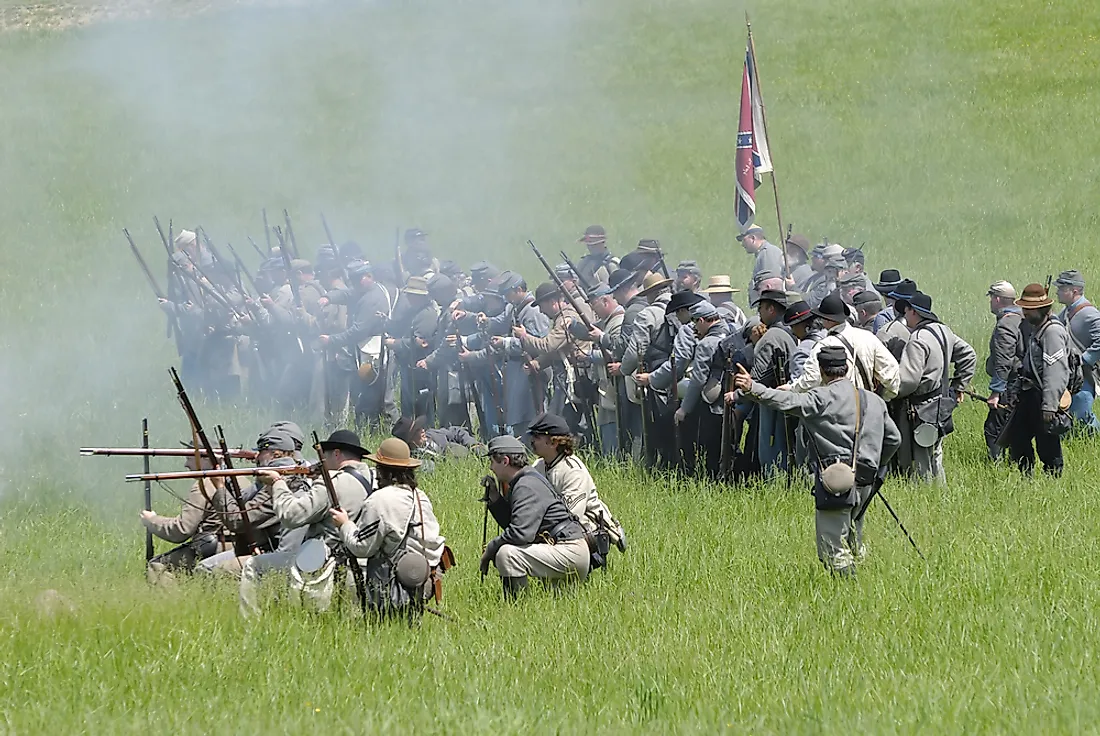The Battle of Chancellorsville: The American Civil War

5. Background
Fought from April 30 until May 6, 1863, the Battle of Chancellorsville is considered Confederate General Robert E. Lee’s greatest victory in the American Civil War, highlighted for his bold tactics despite the losses he and the Confederates would suffer. Taking place in Spotsylvania County, Virginia, the campaign’s beginning was marked by the crossing of the Rappahannock River by the Union army just three days before the battle on April 27, 1863. Since 1861, the Union army had made several attempts to seize Richmond, Virginia, the Confederate capital, with no success. After the loss at Fredericksburg followed by the “Mud March”, on January 25, 1863, President Abraham Lincoln puts Major General Joseph Hooker in charge.
4. Makeup
This battle had Lee’s Confederate Army of Northern Virginia go up against Hooker’s Army of the Potomac, which used to be led by General Ambrose E. Burnside. They Army of Northern Virginia was made up of the First Corps, led by Lieutenant General James Longstreet; the Second Corps, led by the infamous Lieutenant General Thomas J. “Stonewall” Jackson; and the Cavalry Corps, led by J.E.B. Stuart. Meanwhile, the Army of the Potomac had seven infantry corps along with a cavalry corps, altogether, numbering at a staggering 130,000 men. The Union side well doubled the Confederates, who only had a mere 60,000 to their forces.
3. Description
On the evening of April 30, Hooker went to the far left to close up on the Chancellorsville intersection but got caught up the overgrown woods that surround the village. This gave Lee the opportunity to convene with Jackson to strategize for the last time. Early May 2, Jackson took off with 30,000 men and marched to the far left, crossing in front and swinging behind the enemy to get to the weak right flank. The attack that evening took out half of Hooker’s line, and forced Hooker to go on the defensive. On May 3, Hooker began abandoning crucial high grounds in retreat; however, the retreat was not complete until the Union army crossed the Rappahannock River once more on May 6.
2. Outcome
Despite Hooker’s superior strength and number, because of the ineptitude of some of his field commanders and the loss of his nerve, the Battle of Chancellorsville was a decisive victory for the Confederates. It was a costly one though. The Union side suffered 17,000 casualties (13% of his forces) while the Confederates suffered 13,000 (22% of his army). The most notable loss for the Confederates was the death of Stonewall Jackson, who was shot on May 2 by friendly fire while scouting out grounds at night to prepare for battle the next day. He would not die until May 10, following the amputation of his left arm, and his death would leave an irreparable dent in the Confederate army.
1. Significance
The Battle of Chancellorsville is best remembered as Lee’s greatest victory despite the losses he took, including two of his field commanders: Stonewall Jackson, and Brigadier General Elisha F. Paxton. Despite the losses, the victory built up Lee and his army’s morale as they prepared for the Gettysburg Campaign, which would go on from June 3 until July 24, 1863. As for the Union, many of Lincoln’s generals lost their faith in Hooker in light of his conduct in battle, and the tension between Hooker and the other generals grew unbearable, causing Hooker to be relieved of command just days before the Battle of Gettysburg.











